De Materie
De Materie (1989) is Andriessen's magnum opus, which he worked on from 1984 to 1988. In this work for soloists, choir and orchestra he explores how the mind influences matter and vice versa.
This music theatre work is the culmination of a series of large-scale, rigorous, monolithic pieces that started with De Staat (1976) and continued with Mausoleum (1979), De Tijd (1981) and De Snelheid (1983). This series is the backbone of Andriessen’s oeuvre.
De Materie consist of the following four parts: Part I (De Materie), Hadewijch, De Stijl and Part IV.
For these four parts Andriessen chose deciding moments from Dutch cultural history: the Act of Abjuration, in which the Dutch State General declared their independence from the king of Spain in 1581; the seventh vision of the 13th century poet and mystic Hadewijch; the abstract paintings by Piet Mondriaan and dance through the charleston and the boogie-woogie; and the late 19th century texts on love, death and science by among others the Tachtigers poet Willem Kloos. The work is full of references to old musical forms and techniques which are used in a contemporary manner
Together with the opera Rosa (1994), De Materie is to be regarded as a superior exposition of the compositional arsenal that Andriessen has built up in the previous decades. De Materie is primarily the work of Andriessen the thinker: it’s a strand piece, ruled by bar and number, a structure in which numerous extra-musical ideas from science, architecture, religion, history, philosophy, art and literature are united in a contrapuntal network with musical form models. The work seems to be an ode to the flight of the human spirit, and recalls visions of a universal beauty and a higher order in which everything is connected.
It’s the combination of music with historical texts and characters that leads to the perception of meaning in De Materie. These texts and characters primarily represent notions. Thus there is no action in the traditional sense.
As in a symphony, the four parts are different and independent, but also form a unity.
- Part I is based on a prelude by Johann Sebastian Bach and uses texts about shipbuilding and atomic theory from the Golden Age in the Netherlands.
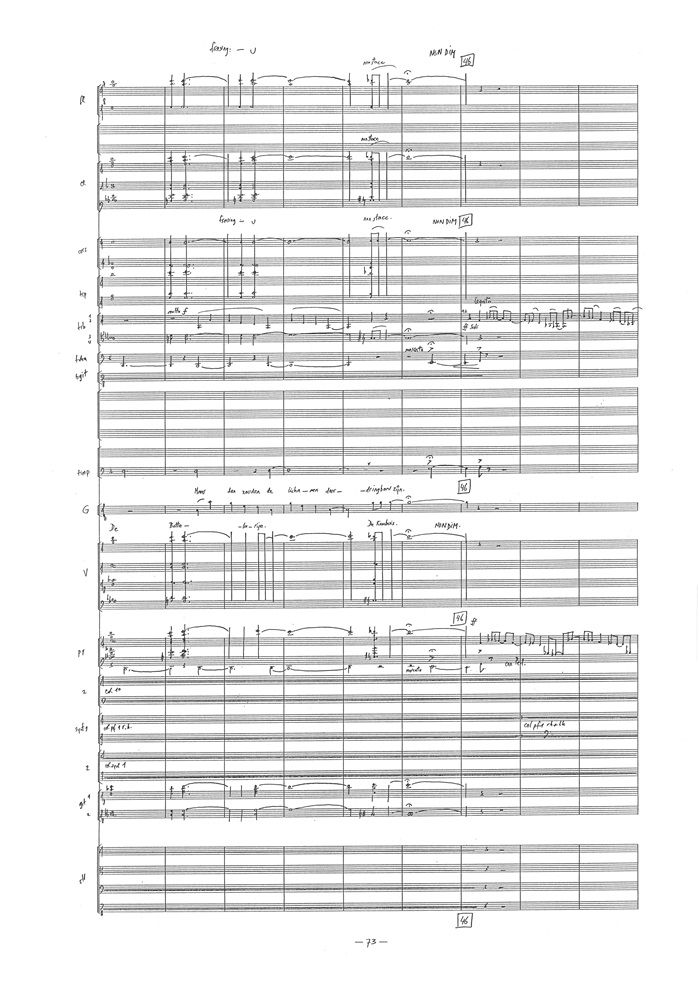
- Part II, on the mystic Hadewijch, is musically speaking composed according to the layout of the ceiling of the cathedral of Reims, which was built in the same century in which Hadewijch lived. The differences in length ratio have been transformed to time ratios.
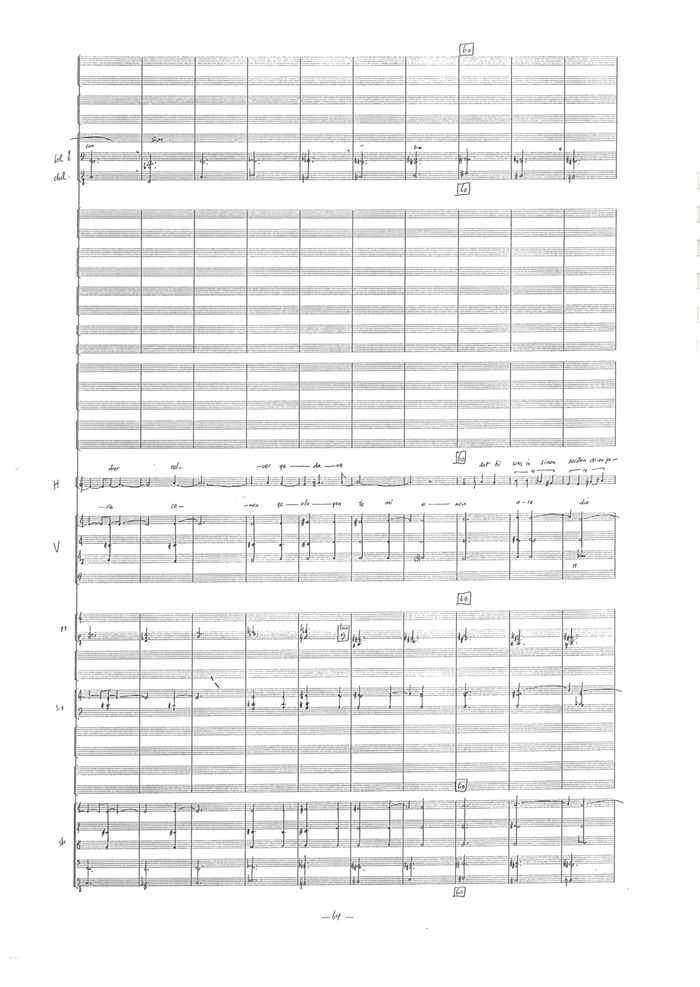
- Part III, De Stijl, is based on a painting by Piet Mondriaan and contains texts from the widow of Dutch composer Jacob van Domselaer (1890-1960) and the philosopher Mathieu Schoenmaekers (1875–1944).
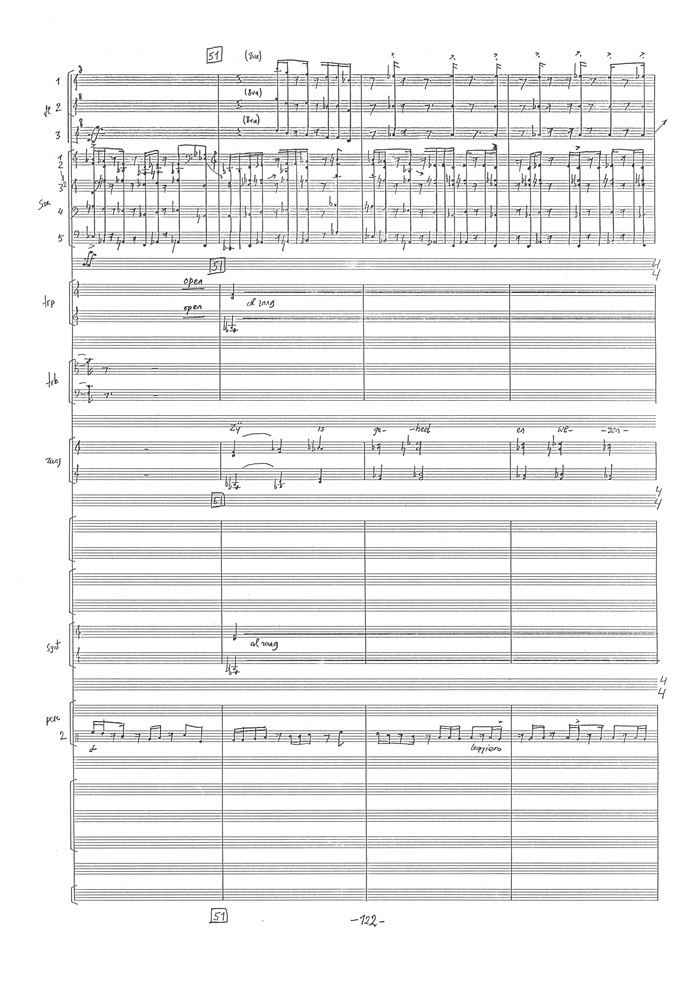
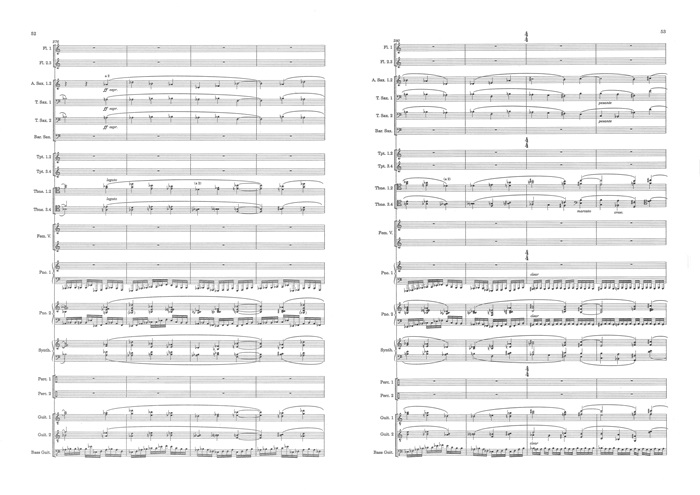
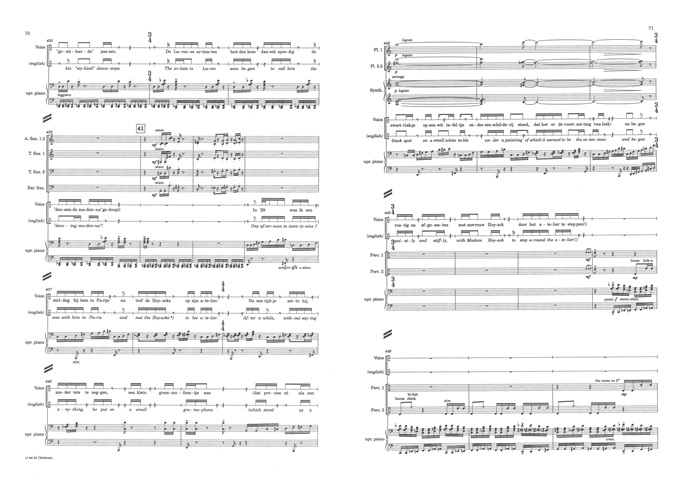
- Part IV has the proportions of a sonnet: 4-4-3-3, the number of lines per stanza. The text is taken from two sonnets by Willem Kloos (1859–1938) and writings of physicist and chemist Marie Curie (1867–1934).
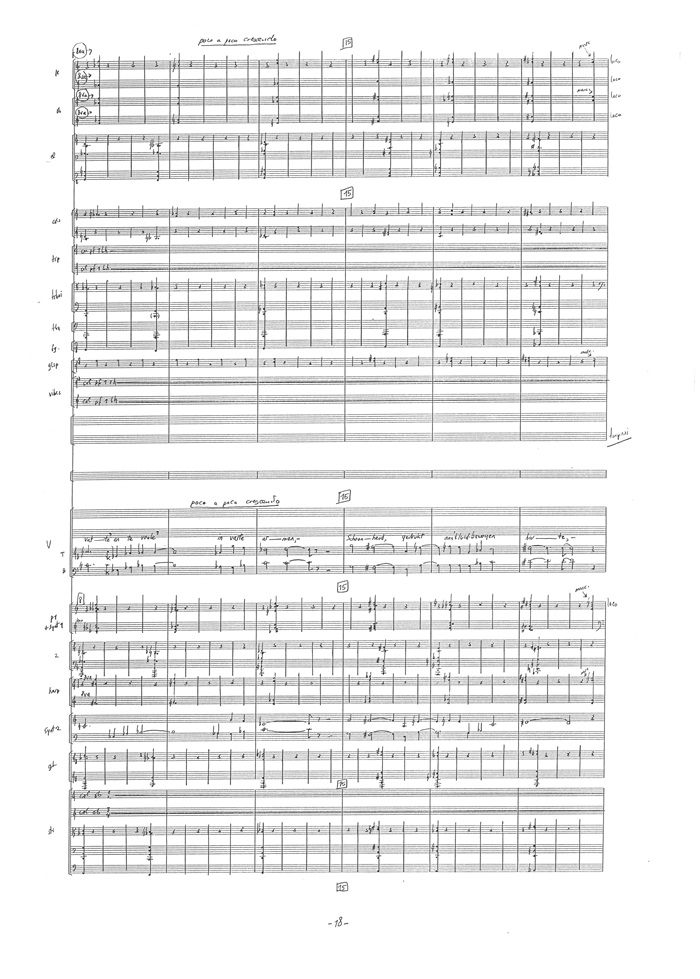
The world premiere takes place in Het Muziektheater in Amsterdam on June 1, 1989, by the Nederlandse Opera; with Reinbert de Leeuw as musical director. The staging is by Robert Wilson.
[Sources: Frits van der Waa: Louis Andriessen (in Het HonderdComponistenBoek, ed. Pay-Uun Hiu and Jolande van der Klis, 1997); Frits van der Waa (samenst.): De slag van Andriessen (1993); Agnes van der Horst: De Andriessens (2013)]